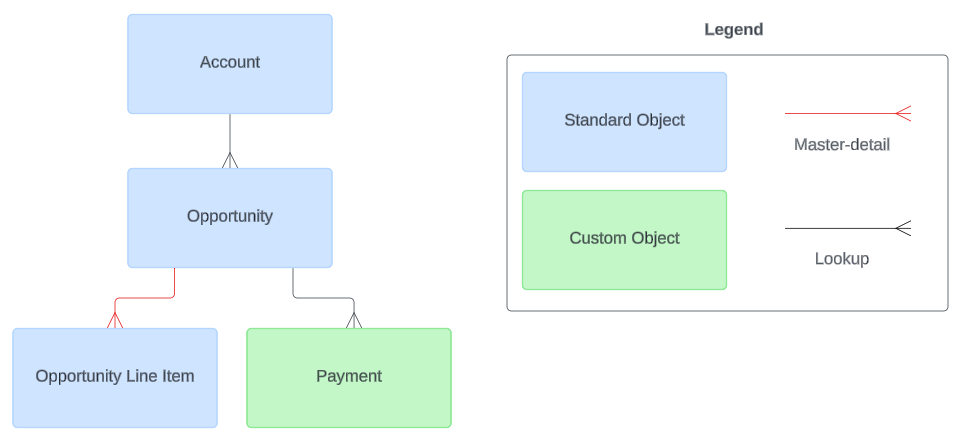As a Salesforce consultant, you often need to create a visual representation of Salesforce objects and their relationships.
This representation allows for both you and your client to understand which objects are parents and which are children. It also helps dictate the sequence for data imports.
Being a critical part of your daily tasks, let’s talk about how to create this data model.
While there are many design patterns available for data modeling, most of them are overly complicated for our needs. As such, I usually keep things clean and simple.
This means
- Only using the one-to-many relationship line
- Use one color to represent a master-detail relationship, and another for a lookup relationship
- Using a rectangular box for each object
- Use one color to represent a standard object, and another for a custom object
- A legend to describe the above
That’s it.
In practice, this looks like

The takeaway
There’s no need to create fancy data models. Keep things simple for easier understanding, and be sure to include a legend so everyone can comprehend what they are looking at.
